When done right, an AI-based healthcare product will always deliver much greater value than its development cost. For example, our partner working on AI medical coding discovered their AI platform could recover $1.14M in yearly lost revenue caused by human under-coding. And that’s just one example based on an audit for an average practice.
So, as long as derived value outshines the development cost of AI in healthcare, there’s a high chance we’ll see more applications of these innovative technologies.
In this blog, we want to help you answer one of the critical questions on your road to success: “How much does it cost to develop AI healthcare products?”
Top Takeaways:
- Not every healthcare application needs ML algorithms under the hood. Sometimes all you need is good old coding.
- The cost of implementing AI in a healthcare app goes higher as you realize that you will need a neural network that works with multiple sources of differently formatted, incongruent data.
- Always start with a proof of concept before wasting hundreds of thousands on an irrelevant product. There’s also a high chance there’s a third-party model out there that you can customize to fit your purpose, which leads to lower development costs.
Table of Contents:
- Here’s What It Costs to Develop AI Solutions in Healthcare
- Types of AI Models: How to Choose AI for Healthcare?
- AI-Associated R&D Costs
- Searching for a Development Team
- Development from Scratch or Implementing a Turnkey Solution
- What Factors Affect the Cost of Integrating AI Solutions into Healthcare?
- What Features and Requirements of AI Software in Healthcare Must Be Evaluated?
- Additional Non-Development Costs
- Estimating the Appropriateness of Implementing AI in Healthcare
- Why Choose Topflight as Your AI App Design Partner
Here’s What It Costs to Develop AI Solutions in Healthcare
The cost of AI in healthcare varies widely depending on the type of AI model, the complexity of data processing, and the integration requirements with existing healthcare systems. Below is a detailed breakdown of the costs associated with different types of AI solutions in healthcare.
| AI Model Type | Estimated Cost ($) | Development Time (Months) | Description |
|---|---|---|---|
| Machine Learning (ML) Algorithms | $150,000 – $200,000 | 3 – 6 months | Used for predictive analytics, risk scoring, and data classification. |
| Neural Networks | $200,000 – $300,000+ | 6 – 9+ months | Ideal for complex pattern recognition and diagnostic tools. |
| Generative AI (LLM Models) | $250,000 – $500,000+ | 6 – 12+ months | Leverages large language models for clinical documentation and chatbot solutions. |
| Computer Vision Models | $180,000 – $400,000+ | 6 – 12 months | Specialized for video- or image-based diagnostics, such as radiology and pathology. |
| AI-Powered RPA (Robotic Process Automation) | $100,000 – $250,000 | 3 – 6 months | Optimizes administrative tasks, such as billing and patient intake. |
| Overall Cost Range | $100,000 – $500,000+ | 3 – 12+ Months | Varies by scope and compliance requirements. |
The cost to develop AI in healthcare ranges from $100,000 to $500,000+, depending on the type of AI solution, with Generative AI models and computer vision systems typically requiring the highest budgets and longest timelines.
Types of AI Models: How to Choose AI for Healthcare?
The cost of implementing AI in healthcare will significantly depend on the type of AI solution you’re looking to build. AI is a general term that includes machine learning (ML), deep learning, NLP, etc.
The first thing to decide is whether your digital healthcare product will run on the following:
- standard ML algorithms
- or neural networks
Unlike AI health apps powered by static ML data models, trained to process data and produce expected output (e.g., find all CT scans with a predefined symptom in a set of scans), neural network-based applications imply constant evolving.
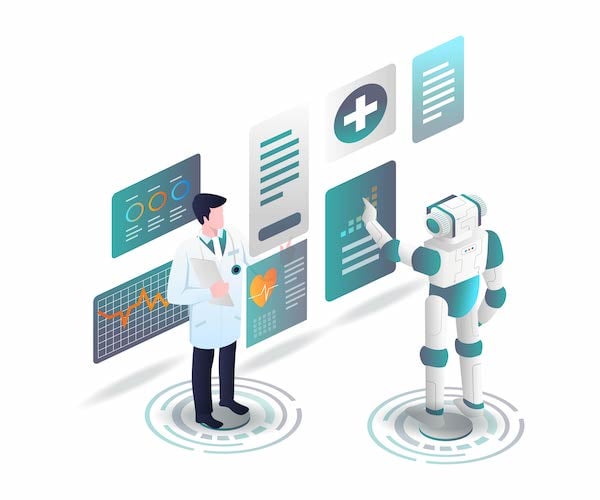
Deep learning algorithms are more complex to develop. So, it’s no surprise that creating a healthcare application running on ever-evolving ML algorithms will cost more.
To give you at least some real-life approximations, it may cost you around:
- $150K to launch the initial MVP version of a healthcare app powered by “standard” ML algos
- $200K to launch an MVP running on a custom neural network
Deep learning is usually the choice when we have massive amounts of data and no certainty about the outcome. Let’s say we’re collecting patient health data from intelligent sensors and analyzing their charts to identify a more effective treatment model. That’s an excellent scenario to apply a neural network: lots of disparate incoming data and algos need to establish correlations between lots of different factors and patients’ health status.
Also Read: MVP App Development Guide
However, this decision — to go with typical ML or dive deeper — is usually achieved by involving an R&D partner with lots of AI development experience in different areas. Founders solely with a healthcare background are likely to pick between AI models having the most impact on ROI:
- NLP and large language models like ChatGPT
- computer vision for image recognition
- Speech-to-text
- generative AI for patient charts compilation
Also Read: How to build a ChatGPT like chatbot
Yes, the health industry is ripe for these innovations. It’s no longer about trends or investments that pay back in the future. At Topflight, we work on many AI tasks that automate essential functions of healthcare providers.
AI-Associated R&D Costs
As we covered in other blogs, AI development differs slightly from traditional software development projects. And that primarily has to do with the research and development component.
Put simply, we may not always know satisfactory output from AI models, or, rather, we may not always arrive at a fair outcome in one straight line. AI takes time to experiment and refine results. Founders need to consider a few things when assessing ML-associated R&D costs.
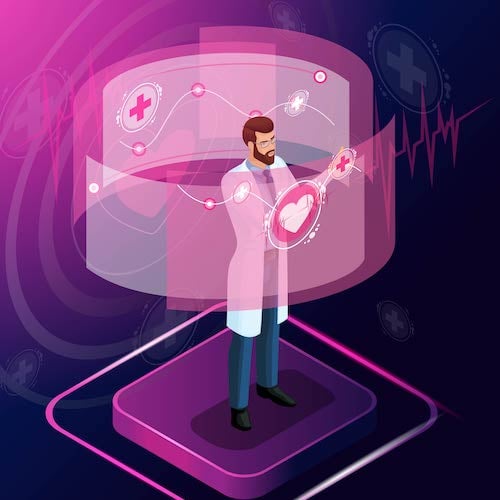
Cross-functional teams
If a typical healthcare product requires front-end and back-end engineers, testers, designers, and product/project managers, an AI product demands the participation of ML engineers and data scientists, who are responsible for creating data models and preparing data for analysis; quite expensive hires.
Scalable technologies
The second thing founders need to consider is choosing the proper technology stack: something that delivers on-point and scales well beyond immediate MVP needs. And that’s quite an R&D process in itself.
I remember how our team had to dig deep to research the most appropriate tech ensemble to accommodate the Allheartz product with a proper tech stack. That included thoroughly evaluating available off-the-shelf and open-source libraries, data models, ML development frameworks, etc.
Technical debt
Finally, it behooves founders to ensure their architecture is the least prone to tech debt, a pervasive issue. Every software project runs into tech debt limits at some point; it’s only a matter of time because tech becomes outdated as time goes by.
However, we can partially avoid this negative effect by properly setting up the development process. For instance, an AI project must have meticulously set up DevOps data pipelines. Another antidote is acknowledging the tech debt early on, prioritizing it, and paying it down as soon as possible with available resources.
Searching for a Development Team
The cost of artificial intelligence implementation in healthcare products gravitates downward if you work with the right development partner. How do you find such a partner?
Look for a well-knit cross-functional team of experts with experience delivering traction-generating AI healthcare apps. Cross-functional is key!
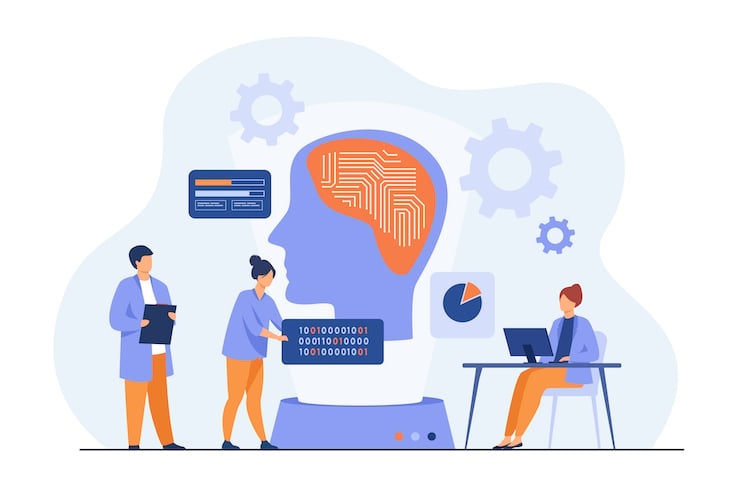
A digital healthcare product, no matter how innovative it is, can only bring traction with a comprehensive approach. Every team member — from AI engineers to testers and designers — must know how to add the most value during the development process.
AI development profoundly impacts each step of the development process:
- front-end and back-end development
- UX/UI design
- QA and DevOps processes
Therefore it’s not like finding a decent full-stack team with an ML developer slapped on top of it. Designers, developers, ML engineers, QA testers, and everyone on the team must have hands-on experience creating successful AI healthcare solutions.
Understanding EHR pricing is crucial for effective budgeting in healthcare IT projects. Check out our in-depth analysis in a separate blog.
Development from Scratch or Implementing a Turnkey Solution
At Topflight, we know for a fact that an AI healthcare app built from scratch takes a tremendous amount of effort. We worked with healthcare providers who invented hardware sensors and implemented their own ML algorithms — creating such solutions takes a lot of time and money.
However, this cost estimate to implement AI in healthcare becomes more manageable if you consider ready-made components already available. Usually, you can pick from:
- ML models and libraries trained on the data that covers your healthcare use cases
- AI frameworks with predefined processes and basic components
- low-code/ no-code frameworks that only need to integrate AI models
All these customizable bits can significantly improve your time-to-market and lower the cost of deploying AI in a healthcare app.
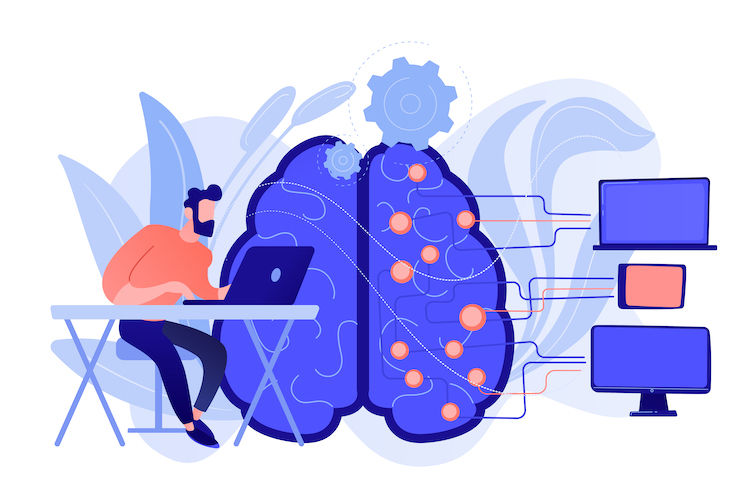
To tell you the truth, that’s precisely how we accelerate most AI healthcare products at Topflight. As for building turnkey AI solutions from scratch (I wish I could tell you more about a few healthcare innovations that are NDA) — they all take much more effort. And typically have to do with developing machine learning models adjusted for specific innovative hardware.
What Factors Affect the Cost of Integrating AI Solutions into Healthcare?
We have already covered a few factors driving up the cost of artificial intelligence in healthcare associated with app development needs. This time, let’s dive deeper and discuss other aspects that founders must consider when estimating the cost of developing an AI-enabled healthcare app.
“Plain” ML algorithms vs. neural networks
Neural network-based AI applications differ from those running on “plain” ML algos like Siri differs from a typical art-generating AI engine. Apple’s smart assistant gradually learns about its customer’s habits and adjusts their user experience accordingly (by showing relevant notifications, etc.), whereas an AI artist simply produces images based on user input without upgrading its skills based on user feedback.
The bottom line is that an AI app that needs neural networks will cost more to develop than traditional (non-evolving) machine learning algorithms.
For example, we once worked on a neural-net engine for SMB loan applications, risk assessment, and re-payment. It took us around 800 hours to deliver the thing, and if we were to skip the neural engine part, we would have likely spent 1.5X less time on this AI app development.
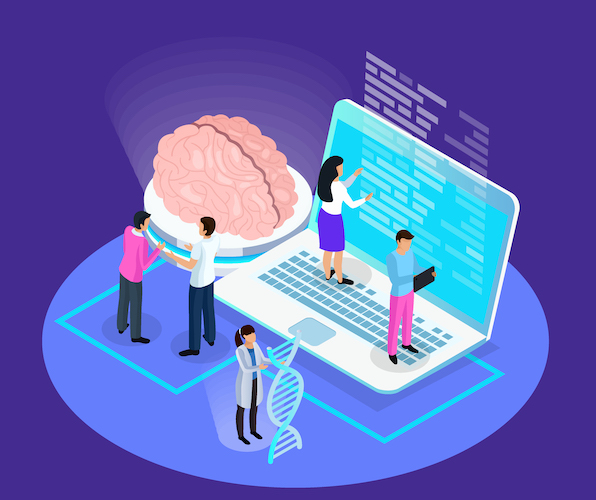
Who must decide whether a “simple” ML algo will suffice or if a neural engine is required? You and your AI development team. This decision does not usually depend on the type of product you’re looking to build.
For example, it can be a patient chart-generating bot, an intelligent chatbot, or an image analysis platform — they can run equally well on neural networks or more traditional algos. However, suppose you know that a product will consume varying data and needs to upgrade its reasoning with every data intake. In that case, you’ll likely need to opt for a neural network-powered solution.
Are ready-made models available?
We both know there’s little reason to invest in developing an AI chatbot engine from scratch when ChatGPT models perform very well, and we can train them on our data, right?
The same goes for almost every other type of AI model. You’d be surprised, but we can customize and integrate many open-source and commercially available data models (aka ML algorithms) into a healthcare solution.
For example, when building a platform for MSK care powered by computer vision, we used Google’s TensorFlow and their pose detection model MoveNet. As a result, we’ve achieved faster time-to-market and accurate pose estimation through a phone cam in real time.
The same goes for image analysis, speech recognition, text-to-speech, and many other AI use cases that fit your vision of an AI healthcare product.
Slightly bigger team
Data scientists — people who know how to work with data, i.e., how to prepare it before feeding it to algorithms. You will need them on your team besides ML engineers, front- and back-end developers, testers, etc.
By the way, you’d also need to work with designers experienced in creating AI interfaces (they have their peculiarities) and DevOps engineers who know how to set up data pipelines and the accompanying ML DevOps environment. Information needs to go through several steps of normalization, cleansing, and unification before being analyzed: data pipes and DevOps infra serve this very purpose.
Also Read: DevOps Implementation Plan: The Complete Guide
HIPAA procedures
PHI must always be protected; therefore, you must account for anonymizing patient data before sending it to the AI engine. Besides, all other HIPAA procedures, like encryption, secure connections, authentication, access rights, and expiring sessions, will add to the development budget.
However, if AI analysis happens on the device without syncing to the cloud, such data de-identification might be unnecessary. As long as all other HIPAA-related precautions are in place, there’s no need to anonymize PHI.
Also Read: HIPAA Compliant App Development Guide
Testing can become a hassle
QA is a chunky part of any software development project, but it can create havoc if not managed adequately during AI healthcare app development. A few things to consider:
- separate test data from actual live data (we can’t test on the same data sets)
- organize a data lake for projects requiring massive amounts of data
- pay special attention to checking AI-concerned UX
Hiring vs. outsourcing
Hiring a dedicated team will always cost more. Let’s say you’re working on a web platform that analyzes patient DNA and provides the best treatment plans, supplements, etc., based on this DNA data coupled with signals from an RPM system. There’s also a mobile app for patients.
That’s quite a sizeable project that may easily take a team of 10-12 experts. Hiring 12 specialists in-house will roughly cost you $130,000 per month of operations. Plus, the typical HR costs.
At the same time, you can hire a remote team that becomes your expansion guarding your overall product strategy at a $25,000 or $80,000/m cap.
Front end complexity
Then, like in any software development project, we need to decide how many front ends we will need:
- Web
- Mobile (native/web)
- Wearables
- Tablets, etc.
The more front ends we have, the higher the development price tends to get. We may want to consider cross-platform tools (if our use cases allow) like Flutter or React Native to write less code that works on multiple platforms out of the box.
Data
Ideally, a healthcare facility has enough data to train its algorithms, but sometimes you have to obtain this information from other sources, which also impacts the development budget.
Integrations with existing infrastructure
Speaking of data, you might have to integrate with EHR/EMR and the like existing systems to pull data to and from. More integrations mean a bigger budget.
What Features and Requirements of AI Software in Healthcare Must Be Evaluated?
We answered several questions about developing mobile ML-driven apps in a separate blog, and I encourage you to read up on that, too. However, let’s quickly discuss the points you must consider when dealing with healthcare AI pricing.
On-device vs. off-device AI
Keeping all AI data analysis on-device is perfect for marketing enhanced security (customers’ data stays on their smartphones) and speed, especially when dealing with complex data like video analysis. By the way, remember that we can still sync the resulting data with the cloud if we need to make it available on other front ends.
On-device ML will always require more effort than the cloud variant, and the added value is increased efficiency (faster analysis).
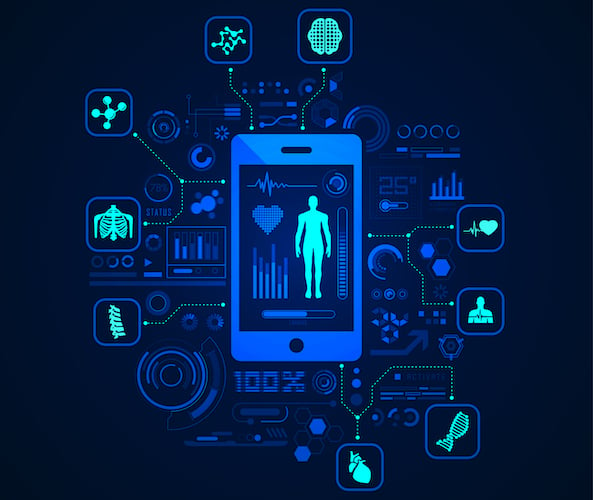
Do we deal with PHI?
If our healthcare app deals with PHI, we’ll need to take extra steps to protect it (anonymization, etc.) — therefore, the cost of producing artificial intelligence in a healthcare app like that will increase.
Supported platforms and the underlying tech stack
Again, the more platforms we want to cover, the higher the development budget. If we choose a cloud strategy — when all data syncs to a secure cloud-based AI engine — our spending will become more manageable.
Integrations with existing AI assistants
It’s important to remember that modern smartphones and other devices often come with AI assistants like Siri, Google Assistant, and Alexa. By integrating our healthcare AI-powered app with these systems, we can make our solution more easily accessible — its features become available outside the app.
Remember that Siri is unavailable on Android, and Google Assistant is less capable on Apple’s devices.
AI-friendly design
Finally, ensure that the app’s design considers its AI nature. This is less of an issue when creating a chatbot (on average, the UX is pretty straightforward), but additional effort and validation of assumptions will be necessary for other AI use cases.
The AI design must follow these basic principles:
- transparency
- user goals — the heart of UX (not potential ML options)
- intuitiveness
- accessibility & inclusion
Think through the design so it scales across different platforms — especially if users are expected to interact with the software on various platforms.
Additional Non-Development Costs
What else (besides development effort) impacts the cost of implementing artificial intelligence in healthcare? Take a look at this list of expenses below:
- maintenance
After you release any app, it requires ongoing work to remain afloat. This includes updates to optimize efficiency and remove bugs. How much? Around $80,000 annually or more, depending on a project’s size.
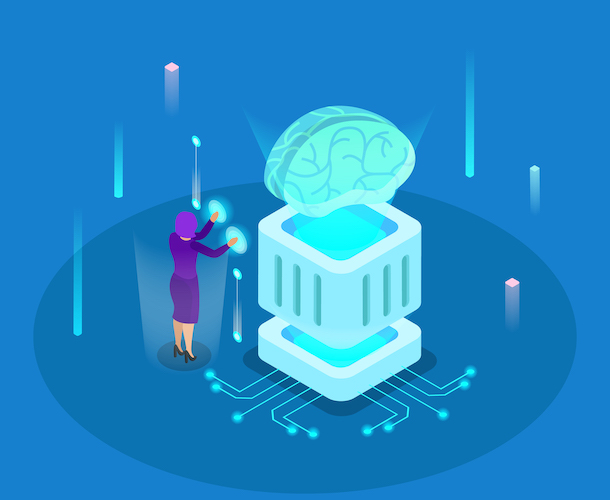
And, of course, you’ll introduce new features in time, which you can treat as a continuous development cycle or a maintenance mode, depending on their caliber.
- hardware costs
Apps run on servers; servers can be in the cloud — managed by AWS, Google, Microsoft, or other service providers — or on-premise. If you opt for local servers, the cost will be higher, especially considering the particular type of FPGA servers required for ML/AI solutions.
- data-related processes
Data will need to keep flowing even after the launch. And you either buy it or pull it from your own sources. This data layer will require continuous effort connected with various data operations.
- keeping the tech stack relevant
What if a more advanced model becomes available? How quickly can you start leveraging such benefits in your health app? What if an ML framework releases an update that simplifies the DevOps routine? Your team must be on the lookout and aware of all the latest happenings that can positively affect the maintenance budget.
- personnel training
Finally, even though AI solutions simplify manual routines, people need time to fully grasp the new working method. That’s kind of not your problem if you sell your AI as a SaaS, but not really. You’ll have to spend time at least on creating start-up guides helping new onboards.
Also Read: App Development Costs: The Complete Breakdown
Estimating the Appropriateness of Implementing AI in Healthcare
There’s one universal rule to ensure that the cost of integrating AI into healthcare applications doesn’t become a pain … — always start with a prototype. Check if an algorithm can produce valuable results and whether the user gets real value out of it.
Case in point, SoberBuddy — a hugely successful virtual chatbot coach. We took over from a team that wrote spaghetti code using DialogFlow and eventually got lost. Why? Probably because they developed a project for their portfolio to show off DialogFlow skills.
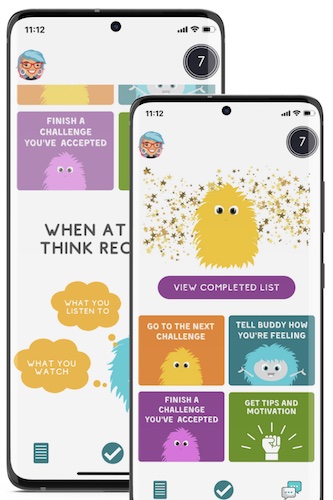
After talking to the founders, we discovered that the app did not need ML. They had a very complex dialog tree, but it was fixed (and could be updated via a CMS), and adding AI algorithms there was overkill. So, we helped SoberBuddy get real traction by ripping off all ML-related code and replacing it with good old custom programming.
Why Choose Topflight as Your AI App Design Partner
You can count on us with your AI healthcare product because we’ve delivered a few successful solutions. Our team has the necessary skills to understand and turn your goals into a working AI app. Here are two recent examples:
Allheartz: Computer vision in physiotherapy and sports care
GaleAI: Medical coding
The average cost range to get out an AI-powered MVP of a healthcare application is between $150,000 and $200,000. A proof of concept will require a more manageable effort. Let’s discuss the cost of deploying AI in healthcare based on your unique requirements. Speak soon?
Frequently Asked Questions
How much does it cost to implement AI in healthcare applications?
AI implementation costs vary depending on factors like system complexity, organization size, and implementation goals. Generally, expenses include data acquisition, infrastructure, software development, and maintenance. Basic implementations start from tens of thousands of dollars, while more advanced projects can cost millions.
Are there hidden costs associated with AI implementation in healthcare?
Yes, hidden costs may include staff training, data preparation, infrastructure integration, and addressing privacy/security concerns. Conduct a comprehensive cost analysis to identify and plan for these costs.
Can small healthcare organizations afford AI implementation?
Small organizations can explore options like starting with smaller-scale projects and expanding gradually. Collaborations, partnerships, open-source platforms, and cloud-based services offer cost-effective alternatives.
How long does AI implementation in healthcare take?
The timeline varies based on project scope and complexity, ranging from months (6-9 months for an MVP) to years. Allocate sufficient time for each phase, allowing for iterative improvements.
What cost savings are associated with AI implementation in healthcare?
Despite upfront costs, AI can streamline administration, optimize resources, reduce errors, and enable early disease detection, leading to improved patient outcomes and lower expenses. Automating processes and providing valuable insights enhances operational efficiency, resulting in significant long-term cost savings for healthcare organizations.